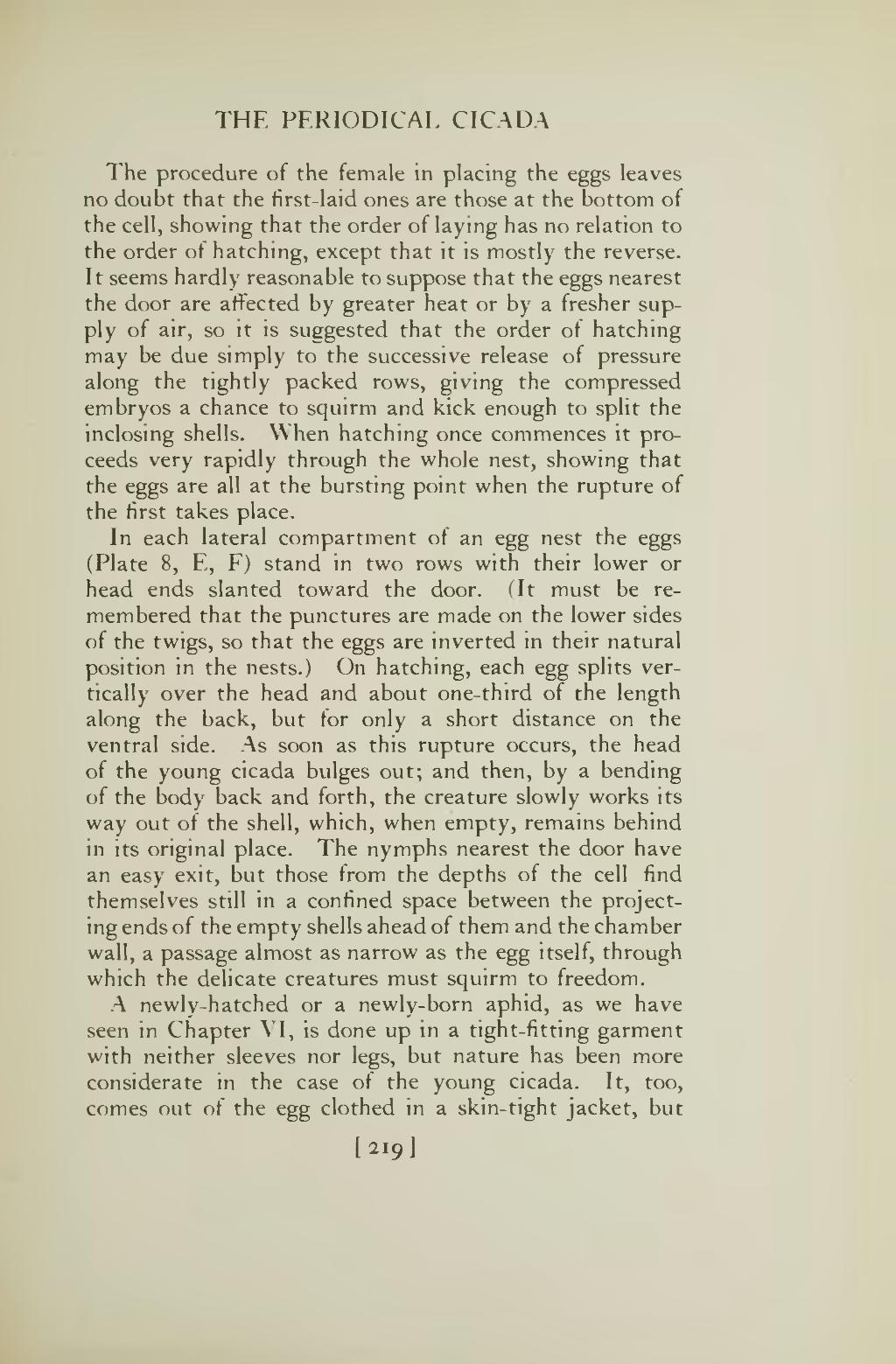PER1ODICAI. CICADA
The procedure of the female in placing the eggs leaves no doubt that the first-laid ones are those at the bottom of the cell, showing that the order of laying has no relation to the order of hatching, except that it is mostly the reverse. I t seems hardly reasonable to suppose that the eggs nearest the door are affected by greater heat or by a fresher sup- ply of air, so it is suggested that the order of hatching may be due simply to the successive release of pressure along the tightly packed rows, giving the compressed embryos a chance to squirm and kick enough to split the inclosing shells. \¥hen hatching once commences it pro- ceeds very rapidly through the whole nest, showing that the eggs are all at the bursting point when the rupture of the first takes place. In each lateral compartment of an egg nest the eggs (Plate 8, E, F) stand in two rows with their lower or head ends slanted toward the door. (It must be re- membered that the punctures are made on the lower sides of the twigs, so that the eggs are inverted in their natural position in the nests.) On hatching, each egg splits ver- tically over the head and about one-third of the length along the back, but for only a short distance on the ventral side. As soon as this rupture occurs, the head of the young cicada bulges out; and then, by a bending of the body back and forth, the creature slowly works its way out of the shell, which, when empty, remains behind in its original place. The nymphs nearest the door have an easy exit, but those from the depths of the cell find themselves still in a confined space between the project- ing ends of the empty shells ahead of them and the chamber wall, a passage almost as narrow as the egg itself, through which the delicate creatures must squirm to freedom. A newlv-hatched or a newly-born aphid, as we have seen in C?apter VI, is done up in a tight-fitting garment with neither sleeves nor legs, but nature has been more considerate in the case of the young cicada, lt, too, comes out of the egg clothed in a skin-tight jacket, but
[?I91
1NSECTS
